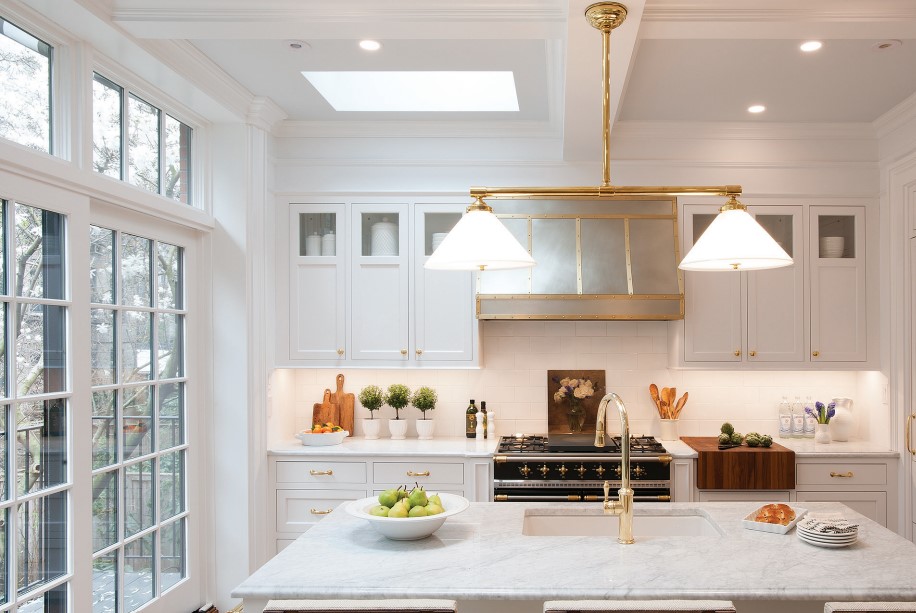
Kitchen cabinets set the tone for overall design of the room. As well as looking good, they need to be good. Their quality and condition will affect the resale value of the house. That’s why it’s important to maximize the value of your cabinet dollars. According to Consumer Reports, with cabinetry accounting for 40% of the room’s budget, it may be too easy to focus on the amount and not the value.
The nomenclature by which cabinets are sold may seem similar but mean significantly different things. To keep it simple, three categories are generally accepted: stock, semi-custom, and custom.
STOCK CABINETS
(aka economy, budget, builder-grade, production, modular, RTA) Sold in home-improvement stores, these may be “in stock” to take home, or available for quick shipment; they may be fully assembled or sold RTA, ready to assemble. Quality can be decent, but low cost is the primary goal for stock manufacturers. Most use frameless construction. Options are extremely limited. Standard cabinet widths are generally 12” to 36” or 48”, usually in 3” increments, meaning filler strips will be needed when the fit isn’t perfect. Standard depth is 24” for base cabinets and 12” for wall cabinets. Assembly of many RTA cabinets turns out not to be a DIY job, so you may have to add labor cost to that of the cabinets. In any case, site-assembled cabinets won’t be as sturdy as a cabinet put together in a factory.
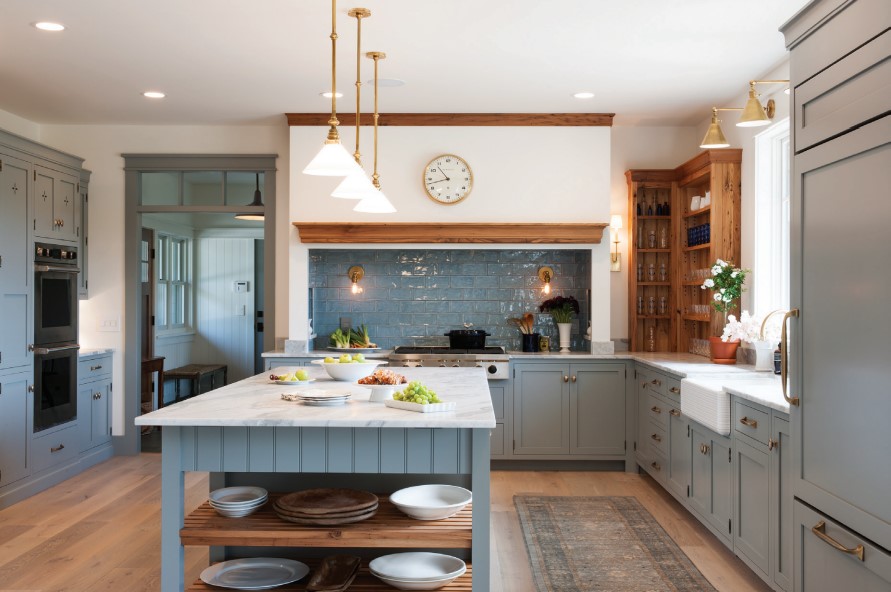
SEMI-CUSTOM CABINETS
Home-improvement stores and some kitchen showrooms offer budget and mid-priced cabinets with more options than stock as well as some customization. Standard widths of 9” to 48” are offered in 3” (occasionally 1”) increments, so again you may need fillers. You’ll find face-frame construction, but hardboard backs and laminate interiors are common. The mid-level range offers many options, sometimes including upgrades in quality. Every option and upgrade are added to the base price. Do your homework: the cost of semi-custom can
creep into the fully custom price range, without the advantages of true custom.
CUSTOM CABINETRY
For discerning clients, custom cabinetry is the best option. The cabinetry will be designed to fit your space, even with architectural “challenges.” The options for finish are the most varied, including multi-step treatments such as glazing, or hand-applied techniques including burnishing. Choices in wood species, door styles, construction methods, storage components … overall, an incredible number of options are available in custom cabinetry.
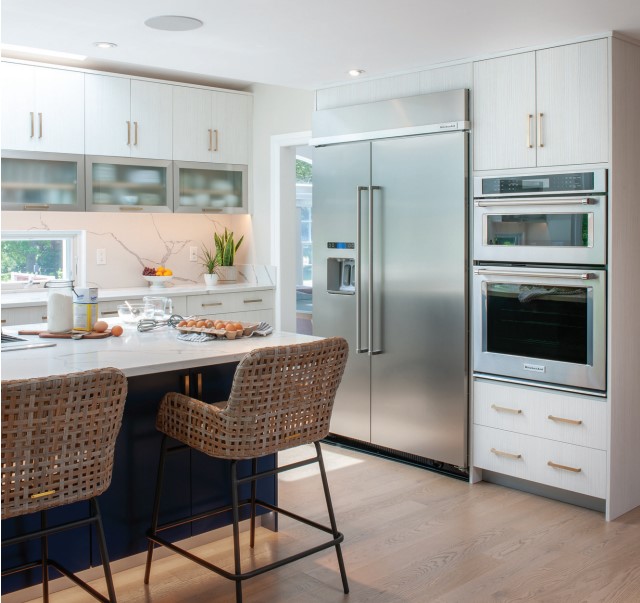
But Wait…A Fourth Option to Consider?
“I think Crown Select falls into a fourth category,” says Brian Stowell, the owner of Crown Point Cabinetry. “Our company recently introduced a more affordable option with a shorter delivery cycle that doesn’t compromise on quality, materials, fit or finish”. Crown Select is referred to as “Limited Custom.” Why? It’s an extension from a custom cabinetmaker.
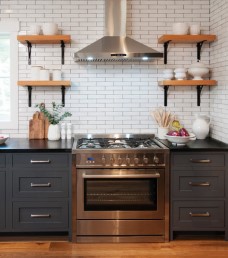
Crown Select is built by the same craftspeople who create Crown Point custom kitchens. Yet Crown Select cabinets for a full kitchen average $25,000 to $30,000, while Crown Point custom kitchens average $40,000 to $45,000. It’s not material or quality that makes the difference, it’s degree of customization. The reduction in manufacturing cost comes from value-engineering the cabinetry and limiting endless customization.
The beauty of Crown Select is that it offers inset face-frame construction, which is all but unavailable in others’ semi-custom lines. There is also a frameless option, for those who prefer a contemporary look. When it comes to the durable factory finish, it is offered in 25 paint colors and 15 stained finishes—which reflect the most popular custom choices. Clients have noted upon visiting Crown Point Cabinetry’s showroom that it’s nearly impossible to tell the difference between Crown Select and Crown Point cabinets without an expert explanation.
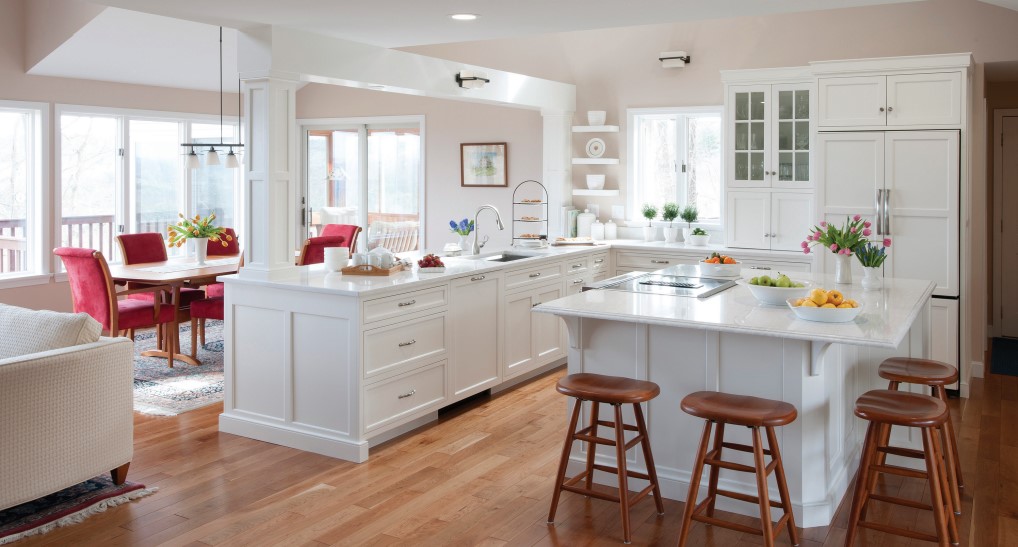
What’s the decision process?
Cost is often a factor, but it mustn’t be the only factor. A ready-to-assemble IKEA kitchen can be as low as $2,000; the same average room in stock cabinets, $6,000–8,000; semi-custom, $20,000–30,000; custom, $35,000–50,000 and up. Upfront cost has to be weighed against value to the house; for example, in years to come, stock cabinets with failing doors or storage components that no longer function would be a liability for resale. (Not to mention the annoyance in day-to-day living!)
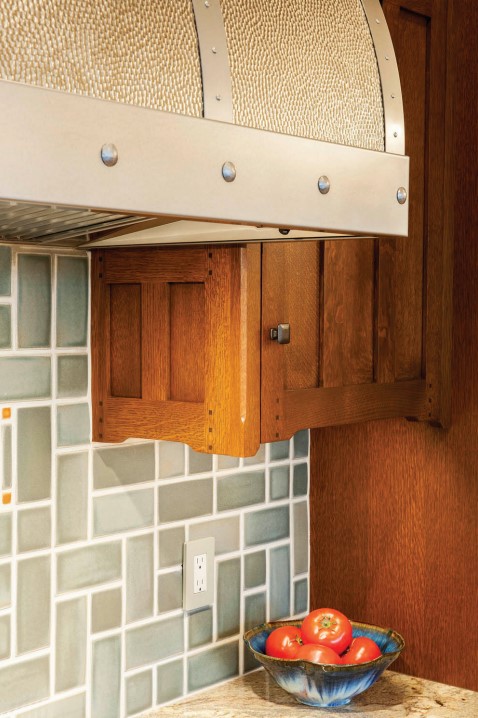
Furthermore, also consider the design aesthetics that would be appropriate for your home. Perhaps you own a Craftsman bungalow or maybe a Contemporary beauty. Does the cabinet company offer styles and details that would complement or even define the room?







